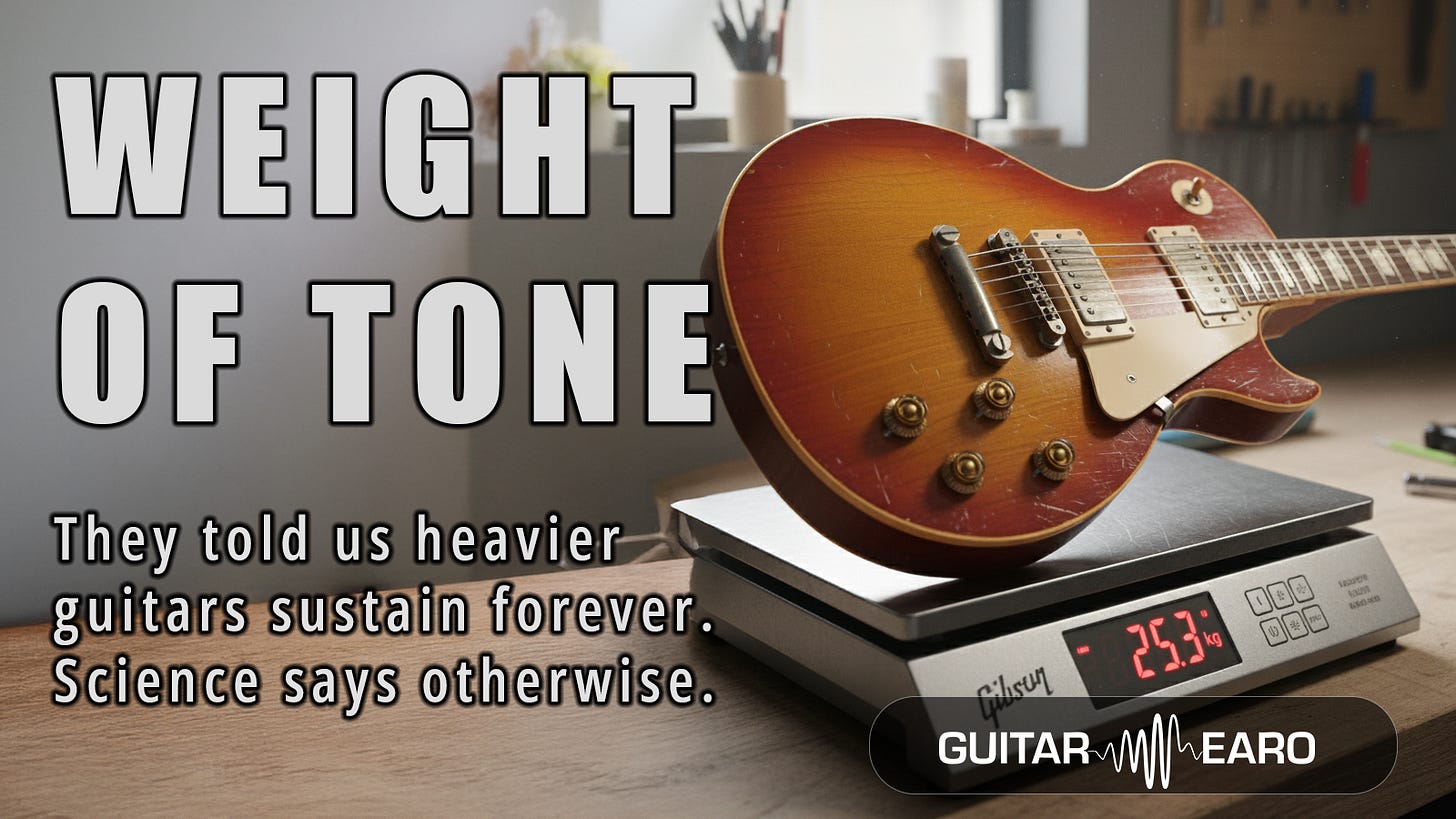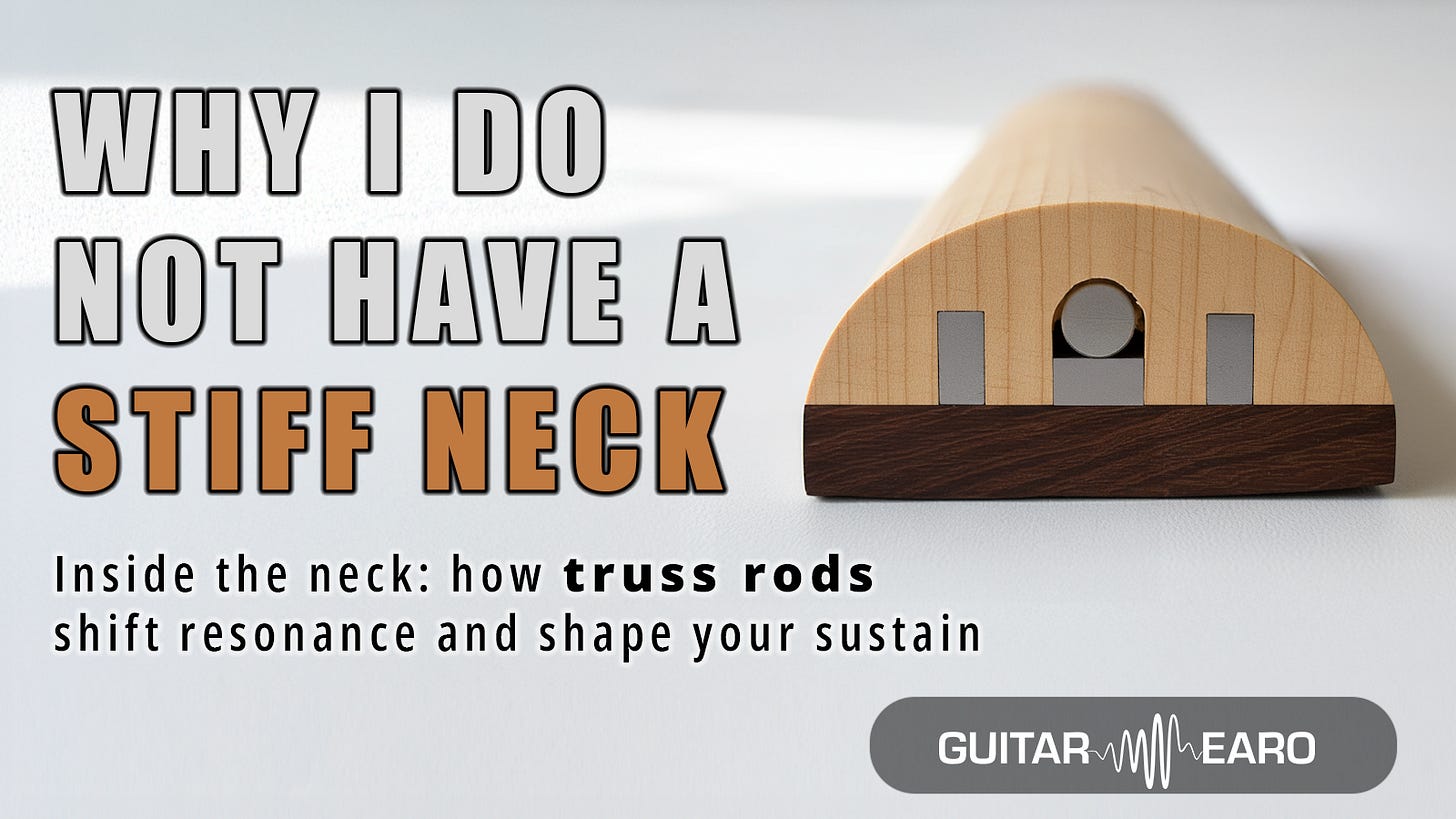For decades, players have repeated a claim:
“A heavier solid-body guitar will sustain longer and sound fuller than a lighter one.”
It became near-dogma in the late 1970s. Les Paul Customs tipped the scales at 11–12 lbs, Norlin-era models had solid maple “pancake” bodies, and brass hardware was marketed as “tone enhancing.”
But does weight = sustain hold up under scrutiny?
The Historical Context
In the Norlin era (mid-to-late ’70s), Gibson leaned into the belief that mass would yield infinite sustain. Guitars were overbuilt: maple necks, volutes, brass nuts, and sheer density.
Ads reinforced it. Brass nuts and heavy bridges were sold as “sustain kits.”
Builders like Travis Bean and Kramer even experimented with aluminium necks, explicitly citing infinite sustain.
This was a reaction to player demand: sustain had become the holy grail after rock guitarists (Page, Gilmour, Santana) showcased long, singing notes.
The Physics Argument
Heavier guitars feel like they should sustain longer because:
A denser body is harder to excite into vibration.
More string energy remains in the string instead of dissipating into the body.
But sustain is not governed by mass alone. It’s a system problem:
Key factors in sustain:
String stiffness (gauge, scale length)
Neck rigidity (laminate vs. single-piece)
Neck joint quality (tight bolt-on vs. sloppy set-neck)
Pickup loading (inductance, capacitance, height)
Bridge mass and compliance
Finish thickness (thick 70s poly vs. thin nitro)
Even cables and electronics can have more measurable impact on tone and perceived sustain .
Experimental Data
Luthiers and researchers have tested this:
Dana Bourgeois (acoustic builder) showed wood density affects resonance but not in simple “more = better” terms.
Ed Roman’s shop famously ran Mythbusters-style comparisons of set-neck, bolt-on, and neck-thru sustain differences were subtle when build quality was equal.
Travis Bean catalogues admitted their aluminium-neck guitars had “infinite sustain,” but in practice many were described as sterile, even “dead.”
Blind tests consistently show no strong correlation between guitar body weight and sustain. Lightweight guitars often ring louder unplugged and sustain beautifully when amplified.
Why the Myth Survives
Psychoacoustics: Heavy = serious. A 12lb Custom feels like it should outlast a featherweight Tele.
Survivorship bias: Some heavy guitars do sound great, so players attribute greatness to weight.
Marketing inertia: Once ads sell “brass sustain kits,” the idea embeds in culture.
Confirmation bias: Players invest in back-breaking guitars, then defend them fiercely.
The Takeaway
Mass alone is a poor predictor of sustain.
Lighter guitars often sound more resonant and alive.
Overly heavy builds can choke vibration, leading to dead-sounding instruments.
Good construction, tight joints, and quality components matter far more than raw weight.
Or as one builder put it:
“A guitar sustains because of what’s working together, not because of what it weighs.”



